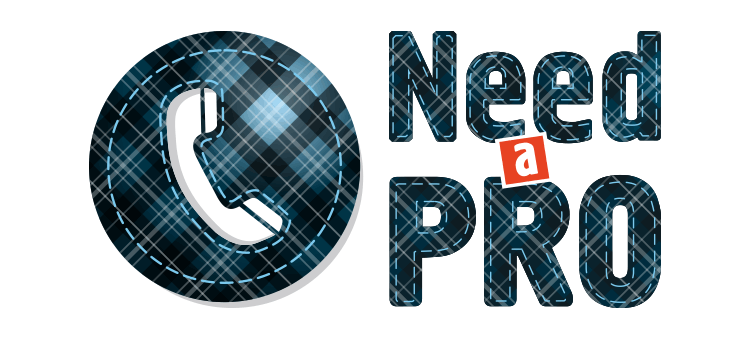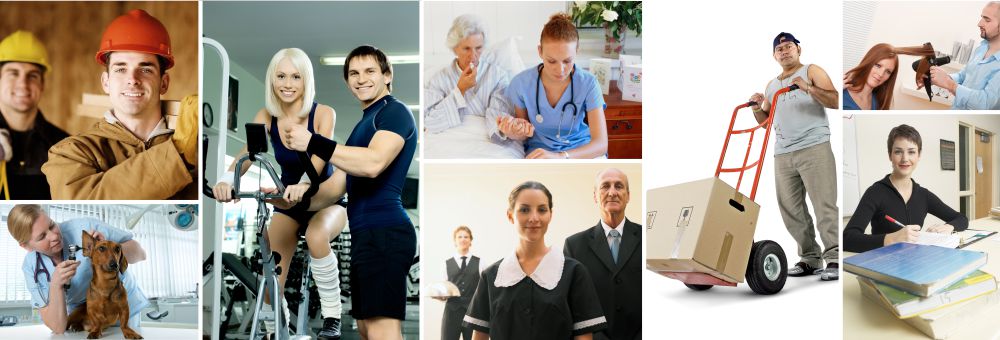The safety concerns for plumbers are varied. They involve lifting, welding, chemicals, asbestos, and burst steam pipes. The best premise for any safe operation is to know how to use the machines worked with.
POWER MITRE SAW
There is a high incidence of injury for those who use a 'chopsaw.' Do not hurry when cutting; keep downward motion smooth; and don't 'push' the blade through the wood, as this is unnecessary for effective cutting. Take time to check the area for any obstructions. Also, the placement of the guide hand must not be overlooked. Along with a power brake, this saw has a 'dead man' switch positioned just before the trigger, which, when depressed, shuts off the saw.
DRILL PRESS
Make sure that the bit is sharp before installing it. Do not leave the key in the chuck and do not adjust the height of the drill press with a piece of wood. Take the time and effort to bend down and reach under to adjust the height of the platform. Clamp objects that could spin or move.
ASBESTOS
If you know something contains asbestos, DO NOT go near it. Report the location of the asbestos to Environmental Health Services. Supervisors should contact proper personnel if asbestos needs to be removed in the job area. Asbestos removal can only be done by people trained and certified in the procedure.
HAND TOOLS
Review the GENERAL WORK RULES (Chapter 2), General Equipment Safety section (see page 2-9) of this manual.
SAFETY PRECAUTIONS FOR POOL WORK
Do not wear steel-toed boots/shoes or other types of heavy-duty work boot/shoe on decks. Any footwear worn must be covered with paper booties (available in Stores/Warehouse).
The booties will prevent bacteria and sharp objects (glass and stones) from being tracked into the pool area.
Wear a mask and eye protection to avoid any dust.
Store soda ash, aluminum, and sodium bicarbonate in places that are high and dry.
Refer to the GENERAL WORK RULES (Chapter 2), Lifting, Carrying, and Handling Safety Section (see page 2-8)
TRAVEL IN HAZARDOUS, ISOLATED, OR CONFINED SPACE AREA
Review the CONFINED SPACED ENTRY PROGRAM (Chapter 18) of this manual. You must contact the plumbing foreman before entering any of these areas.
When traveling in isolated areas alone, people must know your whereabouts at all times. Use the checkout board in the plumbing office and tell someone in the department of your location and expected time of return. The dispatcher may be contacted.
Travel in Steam Tunnels
Review CONFINED SPACE ENTRY PROGRAM of this manual.
Coordinate entry with Heating Plant personnel. Use the buddy system.
Contact dispatcher before leaving, provide estimated time of return, and check in at time of return.
Take any necessary equipment such as a flashlight.
Check with heating plant for any asbestos location.
Hazards to Avoid
Avoid any chemicals that you may find under sinks. Do not move the container; ask the resident to move it. Lay down mats to protect yourself against chemical burns.
Beware of uncovered steam pipes. Consider any exposed steam pipe to be hot.
Inform Dispatch of these pipes so they can be covered accordingly.
Lighting is often inadequate. Prepare for this situation by carrying a trouble light into the area in which you will be working.
SAFETY PROCEDURES FOR MECHANICAL SERVICES
Due to the overlapping duties and the demise of the Mechanical Services section in Trades, HVAC, welding, and sheet metal duties are presented together in this chapter because of their close proximity to each other. People in these shops (Electrical, Environment, and Plumbing) should read the other shops' information due to the overlapping of duties. For example, both HVAC and Welding use the oxyacetylene torch, so personnel in both shops should know how to use it safely.
Working with sheet metal, personnel use brazing, welding, and soldering.
The Electrical Shop, having taken over the functions of Motor Shop, cares for the proper functioning of airflow through the buildings on campus. While the heating and cooling of the buildings have only minimal safety hazards, jobs that involve maintenance of a fume hood can be extremely hazardous. This section will provide information necessary to feel comfortable with the duties that you are asked to perform, with information on fall safety and roof access.
As a worker in HVAC, you will be asked to use ropes and slings, hydraulic rigging, "come-alongs," and block and tackle rigging. After setting up any of this equipment, step back and check to see that it is correct. Avoid any unnecessary hazards. Work efficiently and safely. Do not rush during work.
Usual attire has been discussed in the general section of this manual. Wear steel- toed, leather boots/shoes. The only exception is when working on the cooling towers; wear athletic shoes, as the surface is slippery.
Proper footwear is a personal responsibility. See GENERAL WORK RULES (Chapter 2), Safety Shoes Section (see page 3).
The next three sections discuss the different facets of HVAC and any hazardous information of which you should be aware.
HEATING
There are three types of heating: hot water, steam, and gas forced air. These sources of energy are potentially dangerous. The hot water temperature is 180 degrees Fahrenheit and can scald the skin; a steam leak can cause burns; and natural gas is highly combustible. You must be aware of the potential for explosion.
When working on pumps and motors, you will often be working in water. There are boots available, including hip waders that should be worn. After putting on the appropriate gear, be sure to lock out the circuit prior to any work. And, as a safety precaution, carry a meter even after the circuit is dead. There is always a possibility that the pump or motor is still energized. Act on the side of caution. And be aware of the Lockout/Tagout procedure in Chapter 27.
If asbestos is encountered when performing work, discontinue work and report it to your supervisor immediately. Asbestos should not be disturbed. Only qualified, certified personnel may handle asbestos-containing materials.
VENTILATION AND ROOF ACCESS
Be familiar with the new procedures concerning Roof Access and clearances (see Chapter 25). The major concern of working with ventilation is fume hoods, because of their previous contents. Ask lab occupants what chemicals have been sent up the hood. If in doubt, or if a clear answer is not available, radio the shop supervisor and make him/her aware of the situation. Also contact the Building Proctor. Be familiar with other hoods attached to the ducts.
Ventilation work is performed on rooftops, some with restricted access. Always be aware of your body position.
If you must bring to the shop any potentially contaminated materials, for instance, a fan housing, at the very minimum, run water on it. If decontamination is required, contact Environmental Health Services (EHS) prior to transport or handling for a sample survey.
AIR CONDITIONING AND REFRIGERATION
The main safety hazards when working with air conditioning and refrigeration are Freon, electrical components, displaced oxygen levels due to large Freon leaks, and heavy components and equipment. Any hazardous condition encountered must be reported to your supervisor.
When transferring large volumes of Freon (larger than 30 lb. container) and/or working in a confined space, oxygen detectors should be used. Respiratory equipment (oxygen bottle and mask) should be readily available when working with, loading, or recovering Freon due to the hazard of phosgene gas, an odorless, green toxin.
Should a major Freon leak occur:
Evacuate the area immediately.
Call 911. CSUPD will contact all non-university agencies requiring notification (Poudre Fire Authority, etc.)
Contact Environmental Health Services
Radio the shop supervisor to notify him/her of the situation.
Poudre Fire Authority will gain control of the building and will not release it until the oxygen level is safe for re-entry.
SAFE USE OF OXYACETYLENE CUTTING TOOL
The main dangers of oxyacetylene cutting are fire, burns, and toxic fumes. If a person feels dizzy or nauseated, or has blurred vision, they should discontinue the job and get some fresh air.
PRECAUTIONS
When using oxyacetylene torches, make sure that a multipurpose dry-chemical fire extinguisher is readily available and in working condition. It is recommended that a 10 lb. (4A.40BC) portable extinguisher be on hand.
When using torch indoors, use only in a well-ventilated place.
Wear welding goggles and protective clothing including gloves and welding shield. Keep gloves, hands, and clothing free of oil and grease. Wear gloves to handle hot metal.
Avoid breathing toxic fumes like galvanized metal fumes, and some paint fumes.
Use welding shield for jobs on campus that can be seen from passersby.
Do not leave a burning torch unattended.
Cut or weld at least 5 feet away from cylinders.
Always use regulators; do not use oxygen or acetylene directly from cylinders. Be sure that the regulators used are of the proper design for the cylinder.
Use flint lights, NOT MATCHES, for lighting torch.
Use hoses designated for oxygen and acetylene only.
Do not use oil on regulators, torches, fittings, or any equipment surface that may come in contact with oxygen. Be especially careful not to oil or grease oxygen fittings. These substances will ignite with a violent explosion.
Do not use compressed oxygen to clean off clothing, as compressed oxygen is not compressed air. Oxygen speeds up combustion, and if clothes become oxygen-soaked, they will need only a spark to burst into flames.
Do not breathe compressed oxygen directly from cylinder or hose.
Use soap and paintbrush to test connections for leaks.
Do not use acetylene at pressures higher than 15 pounds per square inch (psi). Acetylene becomes unstable and highly explosive when pressure is over 15 psi.
Do not cut or weld directly on gravel or concrete.
Keep heat, flames, and sparks away from combustibles.
Do not cut or weld on containers that have been used to store combustible materials unless containers have been properly cleaned and purged. Containers that fall into this category are ones that once contained nitrogen, carbon dioxide, or argon.
Safety Rules for Operating Hi-Ranger (Aerial Lift)
See HI-RANGER (AERIAL LIFT) SAFETY PROCEDURES, Chapter 21 of this manual. SHEET METAL
Always be aware of your environment. Keep the work areas as clean as possible; clean up metal scraps immediately after using any of the cutters.
When carrying an object that weighs more than 50 pounds, use one of the two-wheelers (dolly).
If you use the solvent tank, put on the rubber gloves found on the tank.
When soldering or welding in the shop, remember to turn on the exhaust fan.
When welding, lens' light-resistance should be rated #9- #11.
Safe Use of the Machines in the Shop
BAND SAW: Use the light provided on the saw at all times. Use a push stick to guide wood through the saw rather than guiding it with your hands.
BRAKE MACHINE: The brake machine bends metal. As the arms move, there is a chance of being hit below the belt. When using the machine make sure that the area is clear of personnel. If someone else is using the machine, stay clear of its operation.
SHEARS: The shears cut metal. They are relatively safe to operate, but always be aware of your hand position. Keep hands away from the blades as you depress the footplate. Immediately after using the machine, clean up the scraps.
GRINDER: Wear gloves and full-face shield provided at the grinder. Use only the front of the grinding wheel, not the side. This will avoid wearing down the wheel and causing it to break.








 Vectora Design
Vectora Design